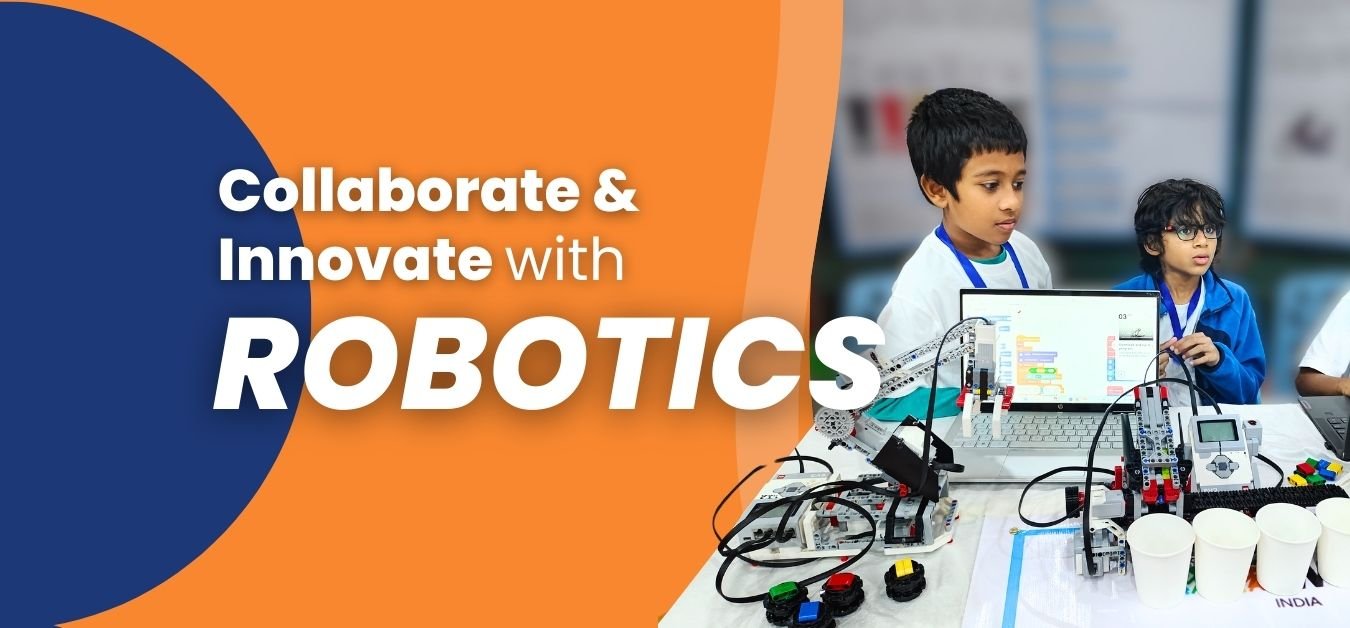In today’s world, learning to work effectively in teams is a crucial skill, and robotics offers an ideal platform to cultivate these abilities. Through robotics teamwork, children engage in problem-solving, coding, and creative tasks that require collaboration and communication. By working together on collaborative robotics projects, kids not only develop their teamwork skills but also gain valuable hands-on experience in science, technology, engineering, and math (STEM). Whether they are designing robots or programming them, these activities nurture essential life skills, preparing children for success in the future. Courses like LEGO Mindstorms EV3 Course for Kids provide a fun and interactive way for kids to dive into the world of robotics while building teamwork, creativity, and technical skills.
Why Teamwork is Crucial in Robotics
In any robotics project, no single person can handle everything on their own. Success in teamwork within robotics comes from bringing together different talents and perspectives. Whether it’s coding, building, or testing robots, each child contributes in a meaningful way to the success of the group. Robotics emphasizes the importance of collaboration, making teamwork a vital component of the learning journey. Courses like Arduino Programming Course for Kids are designed to foster these skills by encouraging children to work together, combine their strengths, and achieve common goals in a fun and educational setting.
1. Collaborative Problem-Solving in Robotics
Collaborative robotics projects involve students solving complex challenges as a team. For instance, programming a robot to perform a task or navigate obstacles requires brainstorming, sharing ideas, and working through setbacks together. This collaborative problem-solving approach helps children learn how to cooperate, communicate effectively, and reach solutions as a group.
2. Role Distribution and Specialization
In robotics teamwork, different roles are assigned based on individual strengths. Some kids may focus on coding, while others may handle the design or construction of the robot. This specialization reflects real-world teamwork, where collaboration and trust are key to success. By participating in coding teamwork for kids, they learn how to rely on one another to complete different parts of the project, fostering accountability and respect.
3. Communication and Conflict Resolution
Effective communication is the backbone of teamwork in robotics. Children must explain their ideas, listen to feedback, and solve conflicts that arise during the project. Whether it’s debugging code or refining a robot’s design, kids develop communication and conflict resolution skills that help them work cohesively as a team.
4. Leadership and Initiative
Robotics teaches teamwork by encouraging children to take leadership roles when necessary. While working on collaborative robotics projects, team leaders naturally emerge and guide their peers through challenges. Leadership here is not about giving orders but about motivating the group, making decisions, and keeping everyone focused on the goal.
5. Creativity Through Coding Teamwork for Kids
Robotics provides an excellent opportunity to blend creativity with teamwork. When children work together on coding and robotics projects, they can bounce ideas off one another, combining their creative strengths to come up with innovative solutions. For instance, one child might excel at coding the robot’s movements, while another might focus on enhancing the robot’s design. This collaboration highlights how teamwork fuels both creativity and innovation. Courses like IoT Using Raspberry Pi Course for Kids offer children a chance to explore these concepts while developing technical and creative skills in an engaging, hands-on environment.
6. Success and Failure as a Team
In robotics teamwork, both success and failure are shared experiences. Whether they win a robotics competition or face technical challenges, kids learn to celebrate achievements and overcome setbacks together. This builds resilience and teaches them the value of persistence, a lesson that will benefit them in all areas of life.
7. Real-World Applications of Robotics Teamwork
Robotics competitions, such as the World Robot Olympiad (WRO), provide children with valuable opportunities to apply their teamwork skills in real-world settings. These events highlight the importance of collaboration, as students work together to solve complex problems—much like they would in professional STEM environments. By participating in such competitions, children gain practical experience that prepares them for future careers in science, technology, engineering, and math (STEM), where teamwork and innovation are essential. To learn more about similar opportunities, Tech Events for Kids offer additional avenues for kids to engage in exciting, hands-on STEM activities.
Conclusion
Robotics is much more than just building and programming robots; it’s a hands-on way for children to learn essential teamwork skills. Through robotics teamwork, kids gain experience in communication, leadership, and collaboration while working on collaborative robotics projects that challenge their creativity and problem-solving abilities. As they engage in coding teamwork for kids, they not only develop technical skills but also learn how to work effectively in teams—preparing them for a future where collaboration is key to success.

